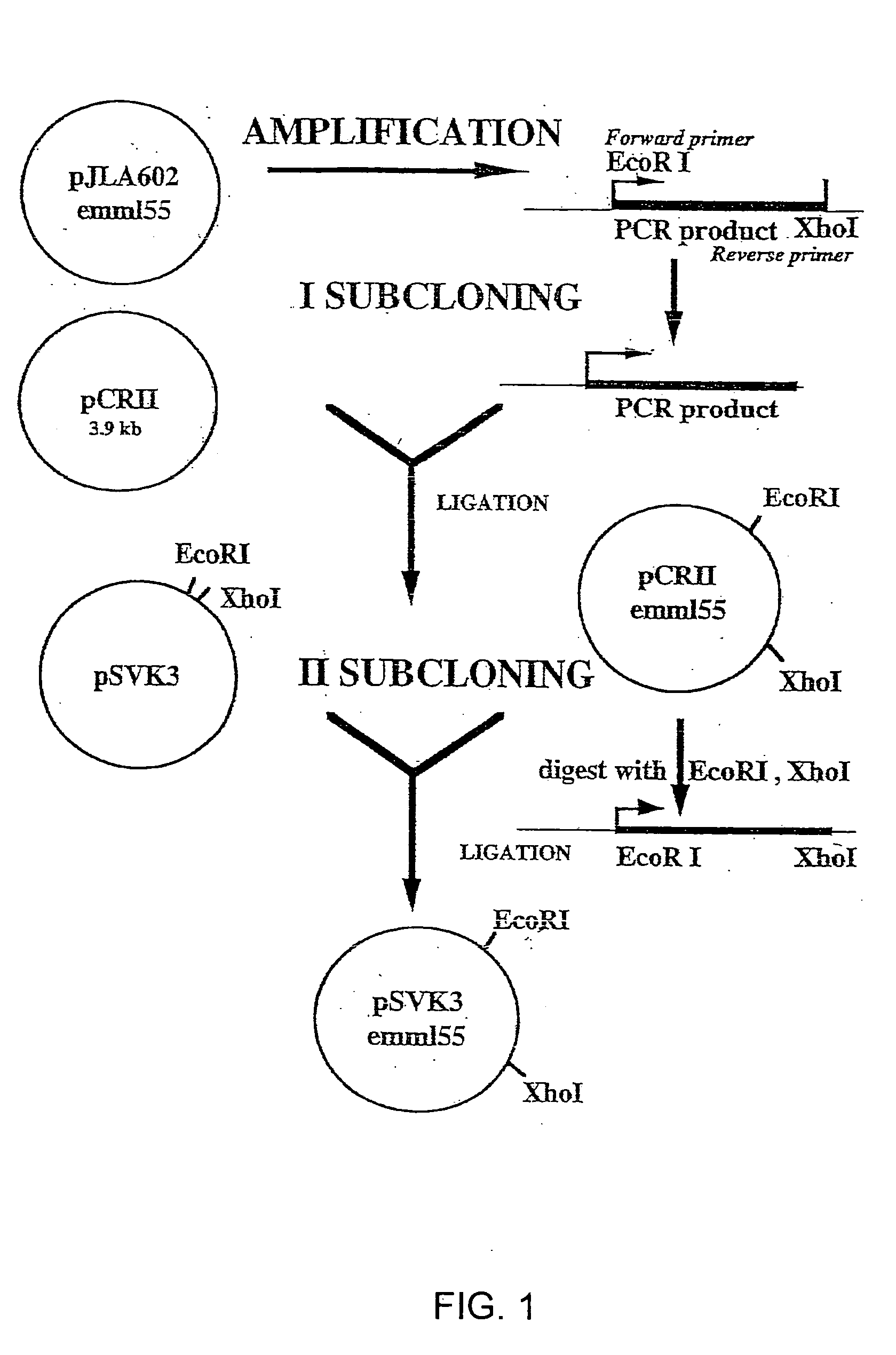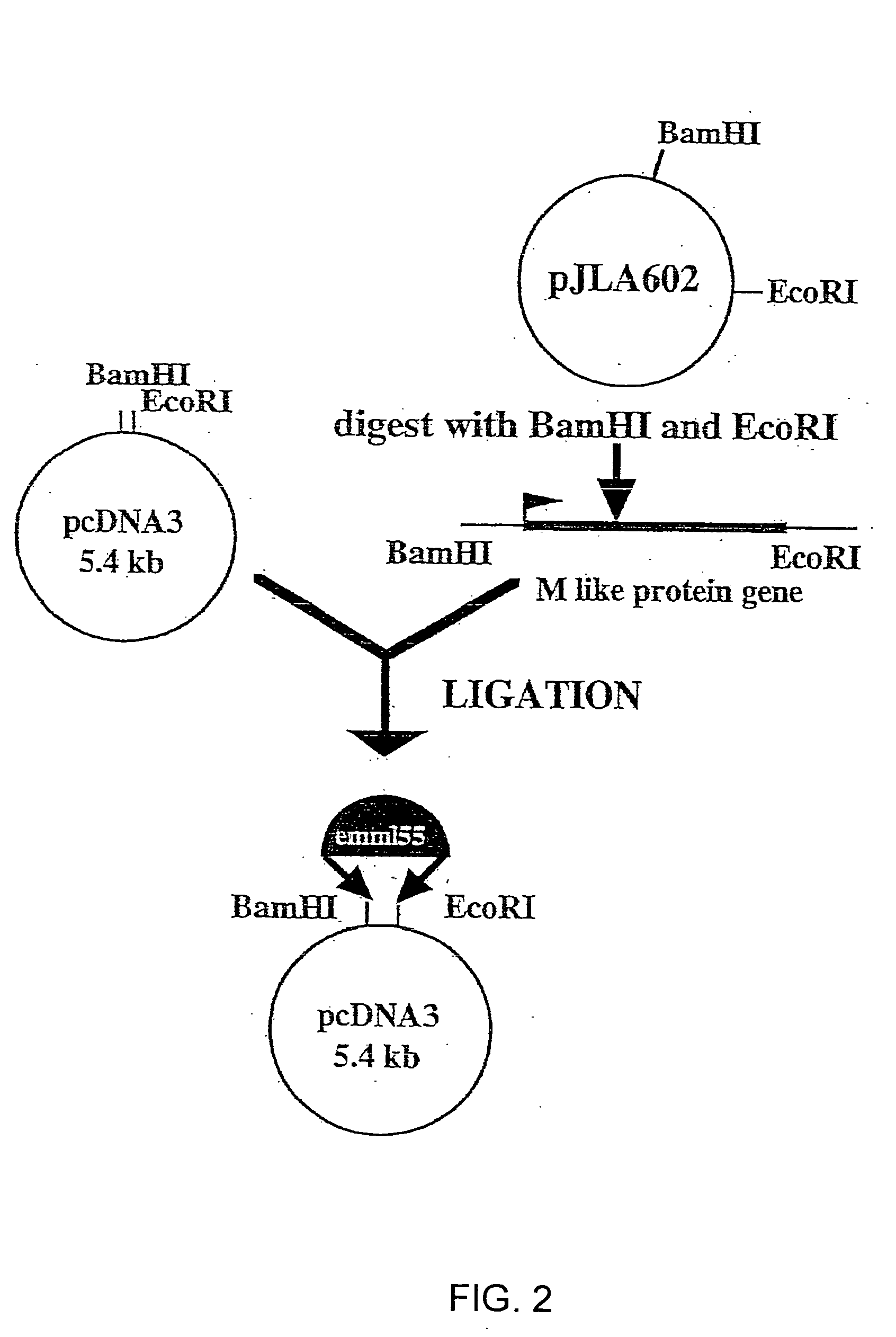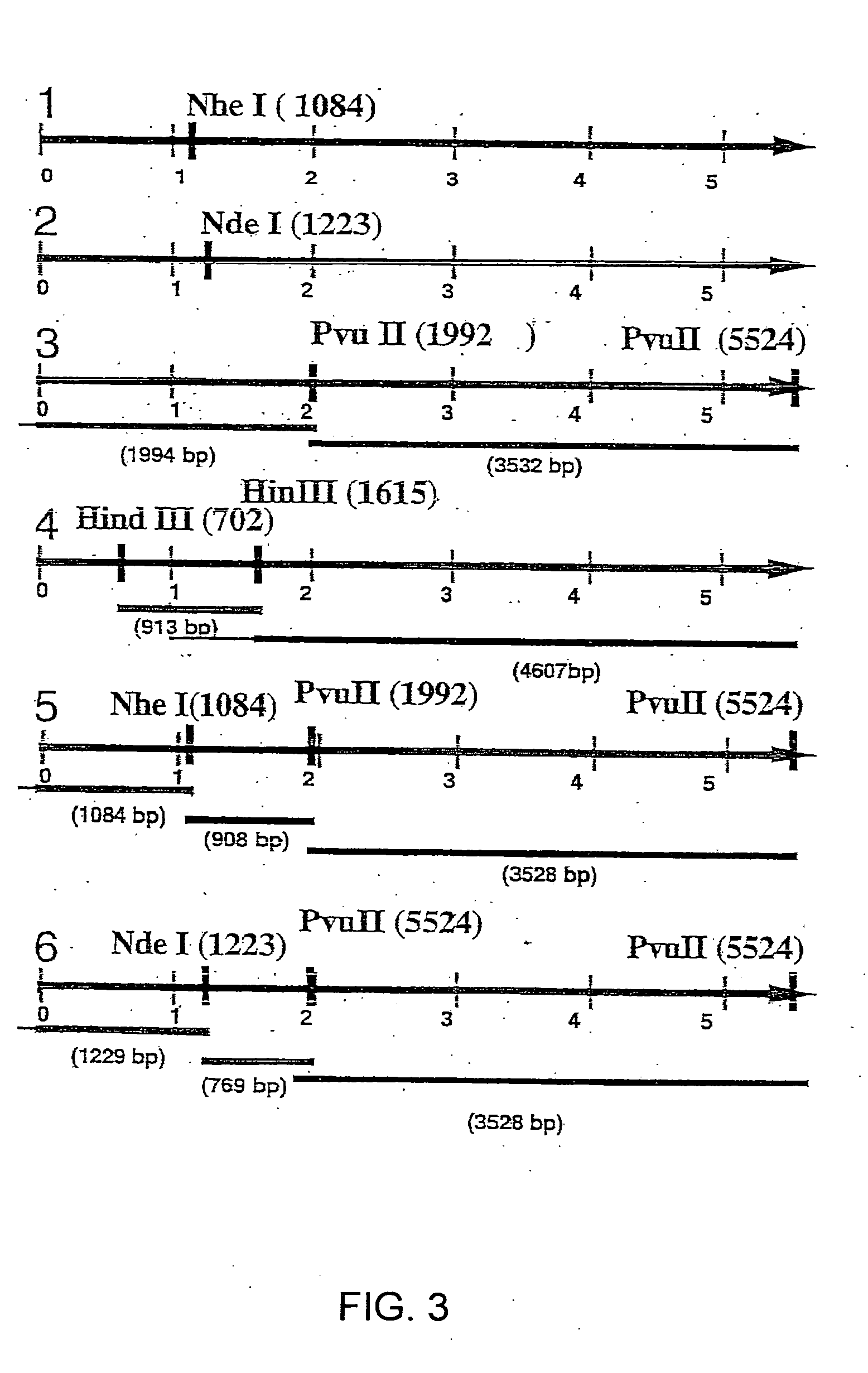Antigen modified cancer cell vaccines for cancer therapy
a cancer cell and antigen technology, applied in the field of antigen modified cancer cell vaccines for cancer therapy, can solve the problems of insufficient and/or ineffective immune stimulation, failure of the host to raise an immune defense, etc., and achieve the effect of rapid and increased anamnestic response, high antigenicity
- Summary
- Abstract
- Description
- Claims
- Application Information
AI Technical Summary
Benefits of technology
Problems solved by technology
Method used
Image
Examples
example 1
[0143] Tumor cells. The tumor cells used in the in vitro transfection experiments and the in vivo studies were the murine neuroblastoma cell line, Neuro-2a. This cell line, a subclone of C1300 murine neuroblastoma, was obtained from the American Type Culture Collection (ATCC) and was deposited at the ATCC in May 1969 (ATCC CCL131). The parental cell line was maintained on Iscove's Modified Dulbecco's Medium (IMDM) supplemented with L-glutamine and 10% fetal bovine serum (FBS). The cells were routinely passaged once a week at a ratio of 1:4 in either 75 cm2 or 150 cm2 tissue culture flasks and maintained at 37° C. in a humidified atmosphere of 5% CO in air. In some cases the cultures were supplemented with penicillin (100 units / ml) and streptomycin (100 μg / ml).
[0144] Growth Curve of Neuro-2a Tumor Cells: Neuro-2a cells were harvested by trypsinization at 37° C. for 5 min. and centrifugation at 800×g for 10 min. at 25° C. Following enumeration by trypan blue exclusion, the cells were...
example 2
[0163] Tumor Cell Inoculation: Untransfected Neuro-2a cells and Neuro-2a cells transfected with emm55 were prepared for inoculation by gently removing them from 75 cm2-tissue culture flasks with a sterile cell scraper. The cell suspension was harvested by centrifugation at 800×g and the resulting pellet resuspended in incomplete IMDM. Seven week-old A / J mice were inoculated subcutaneously in the left flank with Neuro-2a cells. One hundred forty four (144) A / J mice were divided into 2 groups. In the first group, 72 mice were further divided into 4 groups of 18. Each set of 18 mice were injected with the following cell concentrations: 3×106, 1×106, 5×105, and 1×105 in 0.2 ml incomplete IMDM. The mice were examined for tumor development every other day. Once the tumors reached 3.0 cm in diameter, the mice were euthanized. Blood was collected, the spleen harvested and tumors and other tissues were removed from the mice and placed in 10% (w / v) neutral buffered formalin for histological e...
example 3
[0169] Tumorogenicity of pcDNA3 / emm55 Transfected Neuro-2a. One hundred forty-four (144) A / J mice were divided into 2 groups. In the first group, 72 of the mice were further divided into 4 groups of 18 and injected with inocula ranging from 3×106 to 1×105 unmodified Neuro-2a cells. After 17 days, 89% of the mice had significant tumor development (see Table 4, groups 1-4). Tumors in this group developed rapidly to 2.0-3.0 cm in diameter and by day 24, it was necessary to euthanize all the mice bearing tumors (FIG. 8). The second group of 72 mice were also sub-divided into 4 groups of 18 and injected with inocula ranging from 3×106 to 1×105 Neuro-2a neuroblastoma cells which had been had been genetically modified to express Emm55 (N-2a / Emm55). The mice were observed for the appearance of tumors at the site of inoculum. Only two mice, both in the highest inoculum group developed small tumors (<0.5 cm) by day 14. However, these two tumors did not grow and disappeared (regressed) by day ...
PUM
| Property | Measurement | Unit |
|---|---|---|
| pH | aaaaa | aaaaa |
| final volume | aaaaa | aaaaa |
| pH | aaaaa | aaaaa |
Abstract
Description
Claims
Application Information
 Login to View More
Login to View More - R&D
- Intellectual Property
- Life Sciences
- Materials
- Tech Scout
- Unparalleled Data Quality
- Higher Quality Content
- 60% Fewer Hallucinations
Browse by: Latest US Patents, China's latest patents, Technical Efficacy Thesaurus, Application Domain, Technology Topic, Popular Technical Reports.
© 2025 PatSnap. All rights reserved.Legal|Privacy policy|Modern Slavery Act Transparency Statement|Sitemap|About US| Contact US: help@patsnap.com



